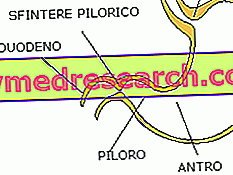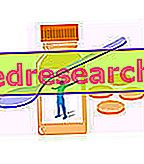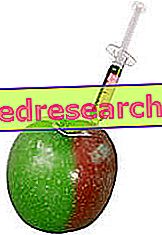The gastrointestinal digestive process consists of three phases.
1) CEPHALIC PHASE: the increase in gastric secretion starts a little earlier than the meal. As in the case of saliva, this mechanism aims to prepare the stomach to receive the bolus.
The sight, the scent, the noise of cutlery, dishes, cooking and even the thought of food, produce a series of stimulatory signals directed to the central nervous system. From here branch out of the efferent stimuli that, after having reached the stomach, increase the secretion of gastric juice.
This signal travels along the fibers of the vagus nerve, responsible for conducting excitatory stimuli processed by the parasympathetic nervous system.
2) GASTRIC PHASE: when the bolus reaches the stomach, there is a rapid increase in gastric secretion. This phenomenon is generated by the mechanical stimulation of the bolus, which favors the distension of the gastric walls. The secretory stimulus is also linked to the activity of chemoreceptors, cellular receptors sensitive to certain chemical substances and in particular to alcohol, coffee, proteins (especially those partially digested by pepsin). This explains why some foods, such as aperitifs and consommé, are generally consumed at the beginning of the meal, with the aim of favoring the digestive processes.
The mechanical and chemical signals, in addition to directly stimulating chloropeptide secretion, increase gastrin release. When this hormone is released into the circulatory stream, it quickly reaches the heart and from there returns to the stomach, where it increases the secretion of the gastric glands.
When the bolus reaches the stomach it does not pass directly into the duodenum, but remains in the bottom and body region for about an hour. In this way the nutritive material has plenty of time to be attacked by the gastric juice. After this interval, the chyme tends to move towards the pylorus and reach the duodenum.
3) DUODENAL PHASE: the entry of food into the duodenum stimulates the mechanoreceptors located along the walls of this first part of the small intestine. As the name implies, the mechanoreceptors receive signals of a mechanical nature which, in this case, are related to the distension of the duodenal walls. This mechanism activates a response of the orthosympathetic nervous system, which exerts an inhibiting activity on gastric secretion.
Also in this case the whole process is influenced by several factors. First of all, duodenal chemoreceptors are involved, sensitive to the presence of hydrochloric acid, which represents an unmistakable signal of the passage of chyme from the stomach to the duodenum. If gastric digestion is finished, the glandular secretion of the stomach is useless and potentially dangerous (ulcers). For this reason, various intestinal hormones are released during the duodedane phase (CCK, GIP, secretin, etc.), with the aim of inhibiting gastric secretion.
The descent of the bolus into the duodenum is favored by annular contractions (peristalsis) that originate from the muscular wall of the stomach. The gastric musculature is not evenly distributed, but becomes thinner in the background and body regions, and extremely thick and powerful in the terminal portion (antrum and pylorus). All this has a functional meaning, since, while body and bottom act as a reservoir for the bolus, the lower regions of the stomach are deputed to the passage of the chyme in the duodenum.

Peristalsis of the stomach has a double advantage. First of all it favors the mixing of the chyme, facilitating the numerous actions of the gastric juice. It also slows the passage of the chyme into the duodenum, allowing the intestinal enzymes to digest it completely. If this were not the case, in addition to digestive processes, nutrient absorption would also be compromised.
Precisely for this reason patients without a stomach (total gastrectomy, which is necessary above all in the case of stomach cancer) are forced to eat meager meals close together. Furthermore, vitamin B12 supplementation is essential, as it does not produce an intrinsic factor.
Gastric contractility is controlled by the same factors, exciters and inhibitors, that regulate chloridropeptic secretion.
At the level of the stomach nutrient absorption is very low and mostly limited to ethanol, acetylsalicylic acid (aspirin) and other NSAIDs. The gastric absorption of alcohol explains the early onset of the excitatory effects of this substance. Furthermore, it is interesting to note that the abuse of substances absorbed at the gastric level is commonly associated with the development of gastritis and ulceration.



